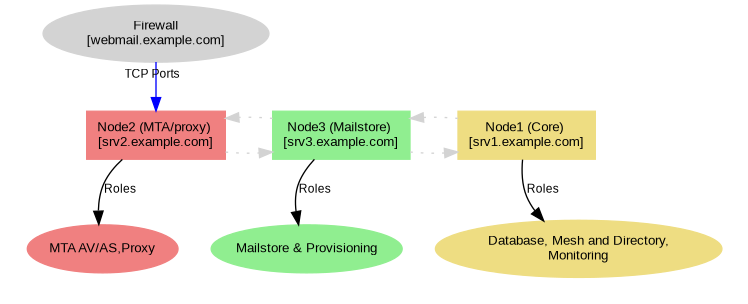Scenario Essential#
This scenario involves the presence of a single tenant and it is suitable for small infrastructures up to thousands of accounts that do not need the full spectrum of Carbonio features. The scenario can be deployed either using the Ansible Playbook, or manually, Node by Node. In both cases, make sure you configure the internal network.
The Components installed on the 3 Nodes, depicted below, are:
Node 1: Mesh & Directory, Database, Monitoring
Node 2: MTA AV/AS, Proxy
Node 3: Mailstore & Provisioning

Fig. 8 Sample diagram of the Essential scenario.#
Requirements#
The Hardware Requirements for each of the three Nodes are the following
8 vCPU
24 GB memory
50 GB disk space for the OS
Besides the requirement above, you need to calculate additional disk space for the users e-mails, taking into account the quota. Purely as an example, if you have 150 users, each with a quota of 5GB, you need to have at least 800GB of disk space, 50GB for the OS and at 750 for user’s total quota.
Other software requirements are common to the other installation scenarios and can be found in Section Additional Requirements
Network Configuration#
The following ports must be opened on the external network, i.e., they are required for proper access to Carbonio from the Internet.
Public hostname |
Ports & Service |
Mapping |
|---|---|---|
mail.example.com |
|
srv2.example.com |